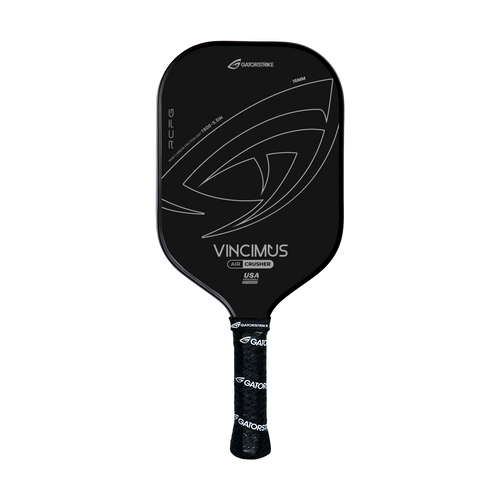
Exploring Pickleball's Global Expansion: How the Sport is Growing Internationally
Share
Pickleball, once a backyard pastime confined to North America, has evolved into a worldwide sensation. From community courts in suburban America to international tournaments drawing elite athletes, the sport’s rapid expansion is nothing short of extraordinary. The blend of accessibility, social engagement, and competitive intensity has propelled pickleball across borders, turning it into one of the fastest-growing sports globally.
In this article, we’ll explore how pickleball is taking root in various regions, the driving forces behind its global adoption, and what the future holds for this dynamic sport.
The Global Surge of Pickleball
While pickleball originated in the United States in the 1960s, its international momentum has skyrocketed in recent years. Today, countries across Europe, Asia, South America, and even Africa are embracing the sport at an unprecedented rate.
1. Pickleball in Europe: A Rapidly Growing Phenomenon
Europe has witnessed an explosion in pickleball popularity, particularly in the United Kingdom, Spain, France, and Germany. The formation of national governing bodies, such as Pickleball England and Pickleball Spain, has provided structure and legitimacy to the sport. Indoor and outdoor facilities are emerging at a rapid pace, with players flocking to the game due to its easy learning curve and intergenerational appeal.
The European Pickleball Federation (EPF) has been instrumental in organizing competitive play, with events like the Bainbridge Cup fostering transatlantic rivalries between Europe and North America. With clubs sprouting in major cities and growing media coverage, pickleball is well on its way to mainstream recognition across the continent.
2. Asia’s Pickleball Revolution: From Grassroots to Elite Play
Asia, with its deeply rooted passion for racket sports like badminton and table tennis, has embraced pickleball with enthusiasm. Countries such as India, Japan, and China are witnessing a surge in participation, particularly in urban centers where compact courts make pickleball an attractive alternative to tennis.
India, in particular, has shown remarkable growth, with the All India Pickleball Association (AIPA) spearheading nationwide initiatives. As international tournaments like the Asian Pickleball Open gain traction, Asia is poised to become a powerhouse in competitive pickleball, with a pipeline of talented players emerging from grassroots programs.
3. South America: A New Frontier for Pickleball
South America’s vibrant sports culture has warmly welcomed pickleball, especially in Brazil, Argentina, and Chile. The sport’s social nature aligns well with the region’s community-driven athleticism. Local federations have started hosting tournaments, and pickleball’s accessibility makes it an appealing option for players of all ages.
In Brazil, a country famous for its love of sports, pickleball is gaining momentum within tennis and padel clubs, as enthusiasts recognize its fast-paced yet low-impact appeal. With increasing investments in court infrastructure and coaching programs, South America is shaping up to be a key player in the sport’s global expansion.
4. Africa’s Emerging Pickleball Scene
Although still in its infancy, pickleball is beginning to make inroads into Africa. Countries like South Africa and Kenya are seeing a rise in grassroots participation, driven by expat communities and local sports organizations. As the continent continues to develop its sporting infrastructure, there is significant potential for pickleball to become a popular recreational and competitive sport in African nations.
The Driving Forces Behind Pickleball’s International Growth
Several factors have contributed to pickleball’s meteoric rise across the globe:
1. Accessibility and Affordability
One of pickleball’s most appealing aspects is its low barrier to entry. The sport requires minimal equipment, and courts can be set up in small spaces, making it feasible for communities with limited resources. Unlike traditional tennis, which demands specialized training and expensive gear, pickleball is beginner-friendly, drawing players of all skill levels.
2. Media and Social Media Exposure
The rise of digital platforms has played a significant role in promoting pickleball beyond North America. Social media influencers, YouTube tutorials, and live-streamed matches have made it easier for international audiences to discover and engage with the sport. Organizations like the Professional Pickleball Association (PPA) and Major League Pickleball (MLP) have also amplified global interest through televised events and sponsorship deals.
3. Inclusion in Multi-Sport Events
As pickleball gains legitimacy, it is increasingly being included in multi-sport events and international tournaments. The push for Olympic recognition is gaining momentum, with advocates highlighting the sport’s global appeal and fast-growing player base. If pickleball were to be included in future Olympic Games, it would serve as a catalyst for further worldwide expansion.
4. Cross-Pollination with Other Racket Sports
Pickleball has found an unexpected ally in the broader racket sports community. Former tennis, badminton, and squash players are transitioning to pickleball, recognizing its strategic depth and physical benefits. This cross-sport appeal has fueled adoption in countries where traditional racket sports dominate, further accelerating its international growth.
What’s Next for Pickleball’s Global Expansion?
The trajectory of pickleball’s global rise suggests that the sport is far from reaching its peak. Here’s what the future may hold:
- More Federations & Governing Bodies: Expect more countries to establish national pickleball federations, leading to better-organized competitive play and increased funding opportunities.
- Increased Professionalization: The emergence of international professional pickleball leagues could elevate the sport to new heights, attracting elite athletes and corporate sponsorships.
- Olympic Aspirations: While not yet an Olympic sport, pickleball’s growing international presence strengthens its case for future inclusion in the Summer Games.
- Expansion into Underserved Regions: Efforts to introduce pickleball in Africa and the Middle East will likely gain traction, broadening the sport’s reach to untapped markets.
Final Thoughts
Pickleball’s global expansion is a testament to its universal appeal—its unique blend of athleticism, strategy, and social interaction makes it a sport for everyone. As new nations embrace the game, international rivalries emerge, and professional circuits expand, pickleball’s future looks incredibly bright.
Whether you’re a seasoned player or new to the game, there has never been a better time to be part of the pickleball revolution. So grab a paddle, hit the courts, and join the worldwide movement that’s reshaping the world of sports—one dink at a time!

















